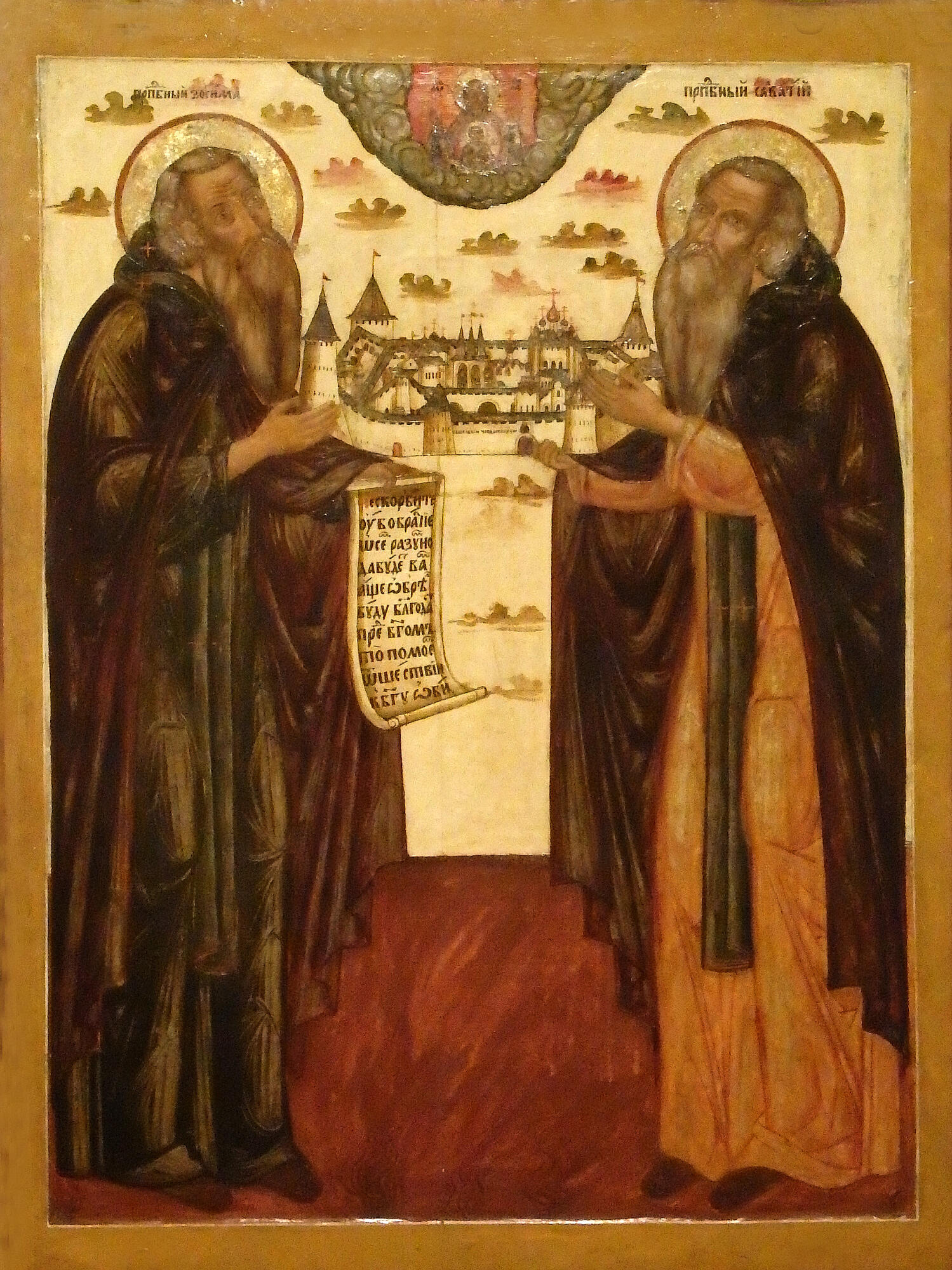The artistic school of the Far North arose on the basis of the paintings that had been brought here in the 15th-17th centuries, as well as the works of the artists that had come from the big cities. The icons painted across the North are referred to as ‘northern paintings’.
Famous painters outside the North were commissioned to paint icons of great importance. In the 16th century, northern artists were still greatly influenced by the masters from major art centers. The Far North — and especially its monasteries — attracted rich commissioners: Russian tsars, princes and nobility. The patrons used to provide pictures painted in different styles as a reference, so the northern artistic school came to synthesize features of several artistic traditions. It’s worth noting that Alexander Borisov, a famous Northern landscape painter, mastered the art of icon painting when he studied in the Solovetsky Monastery.
According to Life of Saint Zosimas and Saint Sabbatius, those orthodox hermits and followers of Saint Sergius of Radonezh built a monastic cell, performed many miracles, often saving those who were about to die in the sea, and accomplished many spiritual endeavours.
In 1429, Saint Zosimas and Saint Sabbatius founded a monastery on Solovetsky Island. Nowadays, the monastery is considered one of the most celebrated religious residences in Russia. The feast day of Saint Zosimas of Solovki is celebrated on the 30th of April; the feast day of Saint Sabbatius of Solovki, the 27 of October. In the 19th century, Saint Zosimas and Saint Sabbatius were venerated as patrons of beekeeping. On the 8th of August, the day of transfer of the relics of those two saints, the hives were removed for the winter.
Saint Zosimas and Saint Sabbatius were usually depicted in monastic robes, often with the monastery in the background. Interestingly enough, the buildings found in the pictures of the northern Saints were rendered with such precision that now they can be used to reconstruct the old architecture of the Solovetsky Monastery. Iconographic images made it possible to rebuild Transfiguration Cathedral, which was declared a World Heritage Site by UNESCO, along with the other buildings of the monastery.
Famous painters outside the North were commissioned to paint icons of great importance. In the 16th century, northern artists were still greatly influenced by the masters from major art centers. The Far North — and especially its monasteries — attracted rich commissioners: Russian tsars, princes and nobility. The patrons used to provide pictures painted in different styles as a reference, so the northern artistic school came to synthesize features of several artistic traditions. It’s worth noting that Alexander Borisov, a famous Northern landscape painter, mastered the art of icon painting when he studied in the Solovetsky Monastery.
According to Life of Saint Zosimas and Saint Sabbatius, those orthodox hermits and followers of Saint Sergius of Radonezh built a monastic cell, performed many miracles, often saving those who were about to die in the sea, and accomplished many spiritual endeavours.
In 1429, Saint Zosimas and Saint Sabbatius founded a monastery on Solovetsky Island. Nowadays, the monastery is considered one of the most celebrated religious residences in Russia. The feast day of Saint Zosimas of Solovki is celebrated on the 30th of April; the feast day of Saint Sabbatius of Solovki, the 27 of October. In the 19th century, Saint Zosimas and Saint Sabbatius were venerated as patrons of beekeeping. On the 8th of August, the day of transfer of the relics of those two saints, the hives were removed for the winter.
Saint Zosimas and Saint Sabbatius were usually depicted in monastic robes, often with the monastery in the background. Interestingly enough, the buildings found in the pictures of the northern Saints were rendered with such precision that now they can be used to reconstruct the old architecture of the Solovetsky Monastery. Iconographic images made it possible to rebuild Transfiguration Cathedral, which was declared a World Heritage Site by UNESCO, along with the other buildings of the monastery.



